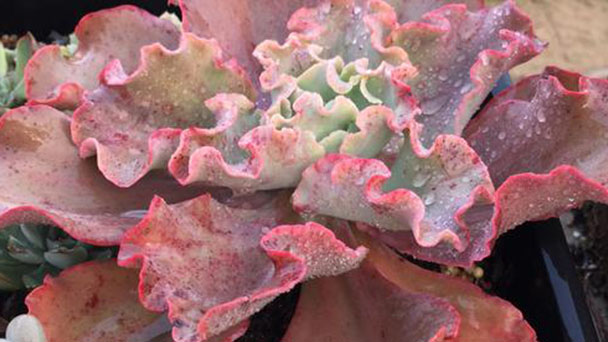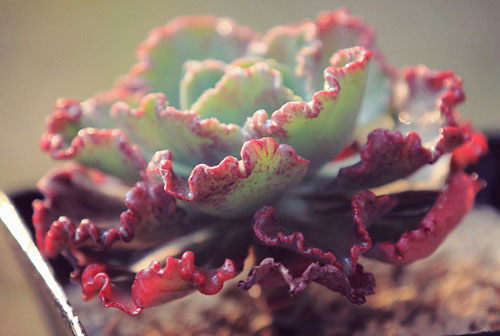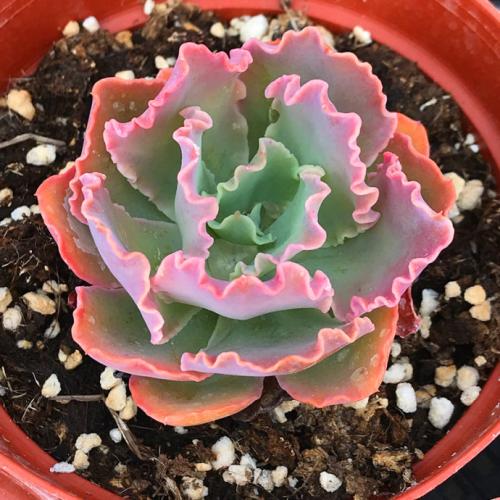How to grow Echeveria Meridian
Written by Maggie
Jan 19 2021

When breeding Echeveria 'Meridian', we should provide 1:1 peat soil and coarse sand drainage soil to ensure a warm growing environment of 18 ~ 25℃, water every 7 days or so, avoid leaf splashing, fertilize once a week, and receive more than 7 hours of astigmatism for vigorous growth. We still can undertake to its sow, cent plant or cutting, make its take root and germinate.

1. Drain sand and soil for Echeveria 'Meridian'
Echeveria 'Meridian' has a high demand for soil, so loose sand with good drainage performance should be selected to avoid the occurrence of stagnant water caused by poor drainage, thus causing poor root growth.The common peat soil can be mixed with the porous and drainage coarse sand in an equal ratio, and then the proper amount of bone powder is added to make it fertile.
2. Warm environment for Echeveria 'Meridian'
Maintain the growth environment of the Echeveria 'Meridian' to be warm and comfortable. It is better to keep the temperature around 18 ~ 25 ° C to avoid low temperatures below 10 ° C in winter and above 30 ° C in summer. In this way, the growth of the Echeveria 'Meridian' will not be good and healthy due to temperature discomfort.
3. Water and fertilizer management of Echeveria 'Meridian'
In Echeveria 'Meridian' how to feed to pay attention to its low water demand, generally 7 days or so for the Echeveria 'Meridian' watering can replenish water to make its normal growth, usually spraying water to avoid spraying on the leaves, but also for its monthly fertilizer, mainly phosphorus and potash fertilizer to make its nutrients sufficient.

4. Get plenty of light for Echeveria 'Meridian'
The light-liking Echeveria 'Meridian' was placed in a sunny position, allowing it to receive more than 7 hours of sunlight, resulting in better growth, more compact plant shape and showy leaves, and a better ornamental value. But do not make it exposed to strong light, so as not to cause it to wither and die.
5. Breeding methods of Echeveria 'Meridian'
During curing the Echeveria 'Meridian', seeds should be seeded, cuttaged and propagated separately. During sowing, seeds should be covered with thin soil and germinate in 15 ~ 20 days after keeping the appropriate temperature of 16 ~ 19℃.Or separate the young plants and plant them directly in a pot; You can also cut the leaves to dry the wound and lay them flat on the sand for rooting.

Latest Updated
- Benefits of Bugleweed - 7 Science-backed Health Benefits
- Bugleweed Dangers & Side Effects - Is It Poisonous?
- How to Plant Evergreen Trees - What You Should Know
- When to Plant Evergreens - Grow Guide for Evergreen Trees
- 12 Wonderful Evergreen Shrubs for Your Garden
- 12 Popular Evergreen Plants with Pictures for Beginners
- When And How To Prune A Lilac Bush Like a Pro
- How to Grow & Care for Lilac Vine (Hardenbergia Violacea)
- Japanese Lilac Tree (Syringa Reticulata) Care & Propagation Guide
- Shumard Oak Pros and Cons - What to Know
Popular Articles
- Winter maintenance of Antirrhinum Majus
- How to Grow Terminalia Mantaly Tree
- How to Grow and Care for Crossostephium Chinense
- How to grow Antirrhinum Majus in spring
- Peristeria Elata (Dove Orchid) Profile: Info & Care Guide
- Underwatered Snake Plant (Sansevieria Trifasciata) - Signs And How To Fix
- How to Care for Brazilian Jasmine Plant (Mandevilla Sanderi)
- How to Grow & Care for Graptopetalum Purple Delight in Summer
- Rosa Chinensis (China Rose): Plant Growing & Care Tips
- How to Care for Baby Sun Rose (Aptenia Cordifolia)